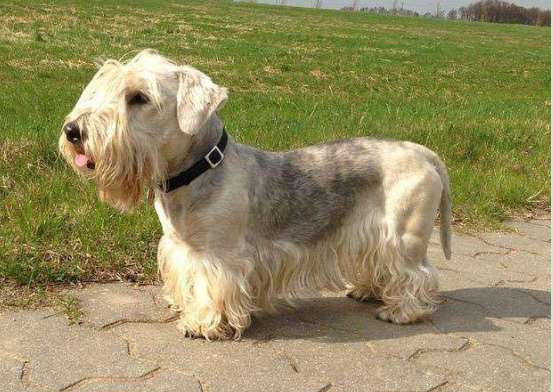The Czech Terrier, also known as the Bohemian Terrier, originated in 1940. It is a dog breed that was a cross between the Scottish Terrier and the Sillyham Terrier. In 1993 Recognized by the Federal Dog Breeders Association, it is a small hunting dog that was originally used to help people chase small cave animals or hunt foxes.
Later, people found that the Czech Terrier was easy to raise, patient, and friendly to children. It was a good watchdog and a good companion dog, so it was It carries over into family life. It’s just that many people are confused about buying an excellent Czech Terrier and don’t know how to “start”. Therefore, the editor has carefully compiled a Czech Terrier selection guide below, hoping to help you choose wisely.

1. Look at the body shape< /strong>
Height: 25.0-36.0 cm
Weight: 5.5-8.0 kg
2. Look at the head
The head is elongated and a bit big. The top of the skull is obviously arched, the space between the ears is not too wide, and the space between the eyebrows is moderately narrow. There are slight wrinkles on the forehead. Cheeks not protruding. The nose is straight, the jaw is strong, and the lips are well-joined. Teeth scissors or level bite.
3. Look at the eyes
Eyes are medium in size, gentle in expression, and shallow eye sockets are defects. Eyes with blue-gray coat are brown or darker to black brown; eyes with light brown coat are amber or darker.
4. Look at the nose
The nose is larger and well developed. The nose of the blue-black Czech Terrier is black, and the nose of the coffee brown is dark brown. A small nose is a fault.
5. Look at the ears
The ears are high at the base, folded forward in a triangular shape, and hang close to the cheek, otherwise it is a fault.
6. Look at the coat
The coat of the Czech Terrier is silky and shiny. The eyes are often covered by long eyebrows, and the hair on the throat is somewhat curly. Generally, the hair from the back of the head to the back, side ribs, and tail is cut short, and the hair on the chest, abdomen, legs, and face is retained.
7. Look at the color
Blue gray and light brown. The coat of the adult Czech Terrier is blue-gray, and the coat of the puppies is black. The coat of the adult Czech Terrier is light brown, and the coat of the puppies is chocolate color. Yellow, gray and white markings are allowed on the head, cheeks, underside of muzzle, neck, chest, belly, lower legs and tail.
8. Look at the trunk
The neck is of medium length, strong, clean and without dewlaps. The shoulder muscles are plump. Topline straight but slightly arched at the loin. The waist is well muscled, relatively long and wide. The chest is round. The abdomen is moderately lifted.
9. Look at the limbs
The forelimbs are straight and strong. When viewed from the front, straight, slightly wider apart, elbows close to body. When viewed from the side, the forelegs are straight and the pasterns are strong and flexible. Strong bone, but not heavy, of medium length. Forelimb dewclaw removal is optional. The hind legs are parallel to each other when viewed from behind, and the thighs are well muscled. The feet are large, with arched toes and strong toenails. The pads are plump. The hind feet are smaller than the fore feet.
10. Look at the tail
The tail is about 18-20 cm long and looks relatively powerful; the root of the tail is not too high and usually droops or bends at will. The end is tilted upward, and the tail extends upward like a saber when moving. The tail cannot be docked.
11. Look at the gait
The Czech Terrier’s gait is stretched and smooth. When it trots quickly, its feet tend to close toward the center line of the body. . The gait combines good reach in the forequarters with strong drive in the hindquarters.
PS: Any deviation from the above points will be regarded as a fault, and any dog that is obviously abnormal in body or behavior will be disqualified.
The above is a guide to selecting Czech Terriers. You must master it carefully so that you can take home an excellent Czech Terrier~